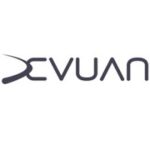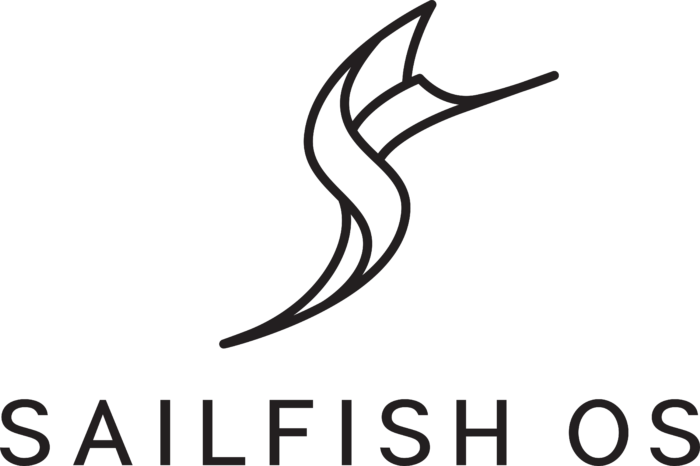|
Post n°82 pubblicato il 19 Luglio 2024 da taichung
Tag: NGI
Since 2020, Next Generation Internet (NGI) programmes, part of European Commission’s Horizon programme, fund free software in Europe using a cascade funding mechanism (see for example NLnet’s calls). This year, according to the Horizon Europe working draft detailing funding programmes for 2025, we notice that Next Generation Internet is not mentioned any more as part of Cluster 4. NGI programmes have shown their strength and importance to supporting the European software infrastructure, as a generic funding instrument to fund digital commons and ensure their long-term sustainability. We find this transformation incomprehensible, moreover when NGI has proven efficient and economical to support free software as a whole, from the smallest to the most established initiatives. This ecosystem diversity backs the strength of European technological innovation, and maintaining the NGI initiative to provide structural support to software projects at the heart of worldwide innovation is key to enforce the sovereignty of a European infrastructure. Previous Cluster 4 allocated 27 million euros to:
In the name of these challenges, more than 500 projects received NGI funding in the first 5 years, backed by 18 organisations managing these European funding consortia. NGI contributes to a vast ecosystem, as most of its budget is allocated to fund third parties by the means of open calls, to structure commons that cover the whole Internet scope - from hardware to application, operating systems, digital identities or data traffic supervision. This third-party funding is not renewed in the current program, leaving many projects short on resources for research and innovation in Europe. Moreover, NGI allows exchanges and collaborations across all the Euro zone countries as well as “widening countries” [1], currently both a success and an ongoing progress, likewise the Erasmus programme before us. NGI also contributes to opening and supporting longer relationships than strict project funding does. It encourages implementing projects funded as pilots, backing collaboration, identification and reuse of common elements across projects, interoperability in identification systems and beyond, and setting up development models that mix diverse scales and types of European funding schemes. While the USA, China or Russia deploy huge public and private resources to develop software and infrastructure that massively capture private consumer data, the EU can’t afford this renunciation. This is all the more essential in the current geopolitical context: the challenge of technological sovereignty is central, and free software allows to address it while acting for peace and sovereignty in the digital world as a whole.
Post n°81 pubblicato il 02 Aprile 2024 da taichung
In the need of configuring my email server with 2 different domains (not subdomains), therefore with 2 different ssl certificates, I found out it is possible to use let's engrypt certificates (which I already have and use for other services). I assume that Let's encrypt certificates are installed in the default folder /etc/letsencrypt/live/domain_name/
Sources:
Post n°80 pubblicato il 13 Gennaio 2024 da taichung
C'è un bug noiosissimo che affligge Gimp da anni. In modo randomico, crasha quando si effettua una qualsiasi operazione su di un'immagine. O meglio, non tutte le operazioni, ma alcune particolari, anche se vengono ripetute dopo riavvio del programma. L'errore causa la distruzione della finestra di Gimp. gimp 'BadWindow (invalid Window parameter)'... the error was 'BadWindow (invalid Window parameter)'... e cose simili. Sembra che i responsabili siano i gestori di appunti dei desktop. i vari Clipboard managers come Klipper di Plasma: quando sono settati per tenere in memoria le immagini, causano i problemi di cui sopra. In Klipper, come presumo anche negli altri, è presente un'opzione nella configurazione che permette di evitare di inserire le immagini negli appunti. Fatto ciò la situazione dovrebbe migliorare. Aggiornamento: Migliora ma non si risolve! Infatti effettuando operazioni come taglia / incolla o lanciare dei plugin continua a causare il crash di Gimp. Pare che ciò sia dovuto alle librerie QT: infatti usando un DE che non le utilizza, tipo Enlightenment per esempio, sembra non accadere. Vedasi: https://gitlab.gnome.org/GNOME/gimp/-/issues/789 Il bug sembrerebbe essere stato risolto in ottobre 2021; mi domando allora perché Ubuntu 22.04 LTS ancora soffra di tale problema invalidante a causa del mancato aggiornamento delle librerie QT!! Aggiornamento: Ho trovato questo semplice e simpatico workaround, che ha più a che vedere con la magia ed il satanismo che non con l'informatica. Perché funzioni (spesso ma non sempre) non lo so. Premetto che ho installato GMIC, FX Foundry e Script-fu; spesso aprendo un'immagine langiand gmic, mi dà errore di script bloccato e non c'è verso di farlo andare con quella specifica immagine. Allora, apro Gimp senza nessuna immagine; poi apro un'immagine semplice, possibilmente non foto, di piccole dimensioni; lancio GMIC che si aggiorna. Poi apro l'immagine che intendo elaborare e su di essa apro una nuova finestra di gmic, che a questo punto non fa più crashare Gimp e si può utilizzare. Notare che la prima immagine va lasciata aperta, non la chiudete, mentre potete chiudere la prima finestra di gmic. A questo punto riesco solitamente anche ad usare i filtri di FX foundry senza che Gimp collassi su sè stesso. Posso anche partire sulla 2a img direttamente con i filtri FX foundry se mi serve, oppure script-fu; talvolta però la successiva applicazione si filtri di gruppi diversi causa nuovamente il crash della finestra di Gimp. Meglio salvare in continuazione.
Post n°79 pubblicato il 09 Gennaio 2024 da taichung
Il 2024 è l'anno di usrmerge, simpatica utility che una volta installata (automaticamente) sulla vostra distro Linux, sposta tutti i binari di /bin e /sbin in /usr/bin ed /usr/sbin. Ora, cosa accade se per qualche motivo il trasferimento non va in porto? Semplice, potete buttare la vostra installazione! Ancora non capisco perché la gran parte delle distribuzioni più comuni (leggi org. Freedesktop) abbia deciso di cambiare (anzi, l'ho letto, riguarda l'installazione dei pacchetti, ma non condivido), fatto sta che sulla mia Debian 11, mi ha distrutto il sistema. Ciò in quanto io non uso systemd, ed invece usrmerge dava proprio un errore su due pacchetti di systemd. Inutile cercare di switchare su systemd a posteriori, ho provato per giorni. Alla fine ho ripristinato un backup.
Standalone tmpfiles binary for use in non-systemd systems. Standalone tmpfiles binary with minimal dependencies. This package conflicts with the main systemd package and is meant for use in non-systemd systems Ottimo. Aggiornato dunque Devuan Chimera alla versione successiva Daedalus. Poi installato systemd-standalone-tmpfiles e quindi php-fpm (che non è partito da solo, credo a causa di un errore dello script di start, nome errato). Alla fine mi mancavano dei pacchetti Perl e qualche settaggio mio particolare, ma complessivamente molto più liscio di altre volte. Inoltre ho constatato che sia la distribuzione che il sito web sono ora molto molto più veloci! In barba a SYSTEMDIMERDA! E tanti saluti ad usrmerge! Per ora...
Post n°78 pubblicato il 12 Ottobre 2023 da taichung
Tag: pinephone, sailfishOS
SailfishOS revealed itself as a nice surprise to me
The bluetooth works, although sometimes finding another device seems to take a long time and disconnecting/reconnecting the BT. Wifi works and is quite stable, but sometimes after suspension it doesn't reconnect to the network. Moreover when you turn it on, although the desired network is already memorized in the phone, it doesn't connect. Turn it off, then on some times, then it works again. GPS doesn't work yet. I sometimes experimented a freeze But now let's talk about the good news SalifishOS actually shows the best performance for battery consumption There's a script for updating the OS without Jolla account (by the way, you'l be asked to create it during the installation process, but don't need it if you don't want: only if you want to access the Jolla store) Custom ringtones. Yes! You can use your own ringtone for calls, notifications, sms, etc. I suggest you to install Storeman, an app store with more apps available respect to the default ChumGUI. Among the others, an UPNP player (but Already said about the GPS, I can't get the signal. GPSInfo from Storeman is an app to check the gps signal. Anyway, there are few wannabe apps as navigator. So far Pure Maps looks the best choice. Interesting looks modRana too, similar to the old, glorious Navit. Last, SouBirdIME is an input method app (from Storeman) which allows you to type in Chinese Hanyu PinYin, which I personally use. It is probably the only OS for PinePhone with such possibility, so far.
|
||||||||||||||
|
|


 Deciso a mandare al diavolo systemd ed i suoi amici, ho dato un'occhiata a Devuan, la distribuzione fork di Debian che utilizza sysvinit. Ho scoperto che Debian Chimera nemmeno usa usrmerge, perciò ho deciso di migrare. Essenzialmente è andato tutto liscio, tranne che per il fatto che, usando io php-fpm, che fra le dipendenze ha proprio systemd (altra cosa incomprensibile), mi ritrovavo con un web server non funzionante. Per fortuna Devuan Daedalus, che corrisponde a Debian 12, al momento la versione stable, ha introdotto da Debian il pacchetto systemd-standalone-tmpfiles il quale sostituisce le dipendenze di php-fpm da systemd ed i suoi fratelli:
Deciso a mandare al diavolo systemd ed i suoi amici, ho dato un'occhiata a Devuan, la distribuzione fork di Debian che utilizza sysvinit. Ho scoperto che Debian Chimera nemmeno usa usrmerge, perciò ho deciso di migrare. Essenzialmente è andato tutto liscio, tranne che per il fatto che, usando io php-fpm, che fra le dipendenze ha proprio systemd (altra cosa incomprensibile), mi ritrovavo con un web server non funzionante. Per fortuna Devuan Daedalus, che corrisponde a Debian 12, al momento la versione stable, ha introdotto da Debian il pacchetto systemd-standalone-tmpfiles il quale sostituisce le dipendenze di php-fpm da systemd ed i suoi fratelli: The camera doesn't work yet.
The camera doesn't work yet.



Inviato da: cassetta2
il 23/08/2019 alle 12:59